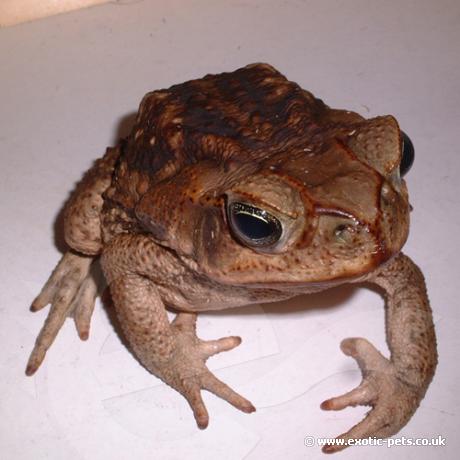

The Cane Toad also known as the Marine Toad is a huge terrestrial true toad which is native to Central and South America. It has been introduced into other non native countries and has caused big problems to native wildlife.
This true toad reaches an adult size of 200 - 250mm and weighs 2kg (4lb), that's two bags of sugar! Females are larger and have a round body compared to the males. For appearance, they may be grey, yellowish, olive-brown or reddish-brown, with the bellies being pale and mottled. There is a large poison gland directly behind the eardrum, a milky toxin is produced from this.
This species is one of the two most poisonous toads, with the toxin being very dangerous and capable of stopping the heart! Caution should always be taken and gloves worn if handling.
They can be found throughout the world, but originate from America. They have been introduced to other countries like Australia to help with pests such as the sugar beet beetle, but they them selves are now classed as the pest!
Some experience is required due the toxins they produce!
You need to provide this large toad a minimum floor space of at least 36 x 18 x 18 inches, low level UVB bulb lighting (zone 1) is essential and overhead heating is advised with either a ceramic bulb or deep heat projector. Aim to provide a thermogradient of between 23-28C.
Use 4 inches of moist soil with moss, leaf matter and bark chipping on top for the substrate and provide cork bark. A large water dish must be proved and changed every few days. Due to this species producing toxins, it's best to clean out the tank every month and using a friendly amphibian/reptile disinfectant.
Feed your toad a varied diet of live insects every few days. Adults will take small rodents and other amphibians in the wild, so feed them on small -defrosted pinkies. Juveniles should be fed every day and adults every two to three days.
Caution: When providing water for your amphibians, this MUST be treated with an Aquarium de-chlorinated solution. The Chlorine will harm and possible kill your amphibians after a period of time. Alternatively, you can use fresh, clean rainwater!